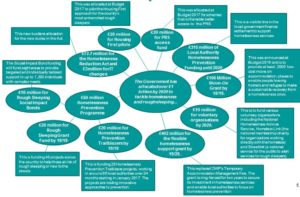The North West Housing Forum – Event Write-Up
Despite the terrible weather conditions that blighted the final week of February, a strong group of intrepid adventurers braved the elements on the 27th to attend the North West Housing Forum’s Debate on Regeneration.
The Forum, which is supported by the NHC, brings together the housing officers, Board Members, and Elected Members of the North West to debate and progress the most pertinent issues in housing affecting the region.
The key note speech was delivered by Professor Ed Ferrari who set the scene for the debate which followed. Ed underlined the importance of housing to society; whether through underpinning the communities in which we live, its role in supporting health and wellbeing, as well as the role housing can play in reducing the costs of the welfare state.
The Forum noted that regeneration now meant something different to different regions. In the south, and particularly in London, the policies enacted in the name of regeneration had cast a shadow over work done in other areas. However, as Professor Ferrari noted, regeneration when done well brought many benefits; from maximising the value of infrastructure, to supporting the sustainability of local services, through to spreading risk by strengthening a communities tenure and social mix.
With Professor Ferrari haven given everyone food for thought, a series of presentations by Forum members and partners showed how organisations were reinvigorating communities in diverse ways.
Phillip Whitehead, Regional Regeneration Director at Countryside, discussed seven ways in which private sector developers could help social housing providers. Throughout Phillip’s presentation there was a strong emphasis on partnership and using each other’s relevant skills to create integrated communities. Countryside understands that developments need to allow space for local shops and community facilities, hubs which neighbours can engage around. It was also important for partners to commit to areas, and to each other, long term; investment in employment and training, as well utilising local suppliers in the supply chain both bring lasting benefits.
Clare Tostevin, Director of Communities at RBH, built on some of the themes discussed by Phillip with a presentation highlighting how her organisation was building inclusive growth into Rochdale town centre. Central to RBH’s vision of regeneration was to ensure a connection between homes, people, and jobs. If Rochdale was to retain existing residents and attract new people to the area then a housing offer needed to match the aspirations people had for their working lives. With investment in quality homes, community hubs, and employment training, a vibrant town centre could flourish.
The Forum then heard about Bolton at Home’s UCAN service, another way in which organisations were supporting the ambitions of residents. ‘Urban Care and Neighbourhood Services’ are central to neighbourhoods and focus on local needs. The idea is to listen first and tailor a support package accordingly. Residents can access the internet and a telephone free of charge; receive advice on constructing a CV and searching for jobs, or just drop by for a friendly chat.
Finally, Tony Mousdale at Liverpool City Council informed attendees how the council was using Selective Licensing to drive up standards in the Private Rented Sector. Liverpool has seen a growth in the number of private rented homes, with the sector doubling in size between 2001 and 2011. An important facet of the Council’s scheme is a range of commitments known as the Ten Point Pledge. The Pledge will see the creation of a Landlords Forum and Advisory Panel to strengthen engagement in the sector and will also provide a robust stance against landlords who allow housing standards to fall below a satisfactory level.
The event finished with Forum members agreeing that more could now be done to convince key decision makers that investment should be directed to areas such as the North West. A further paper building on the discussions held as part of the debate was announced in the hope of supporting this work.





